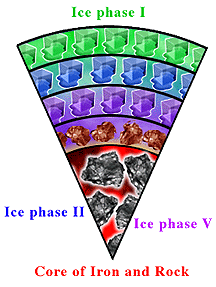This drawing illustrates the general composition of icy moons.
The Composition of Icy Moons
When the
Voyager missions flew by some the icy moons, they took the
spectra of the surface. The spectra matched that of ice and also several different kinds of snow (crushed ice).
The Voyager spacecraft could not measure the interior of the moons, however. Instead they measured the density. The density of iron or rock is between 3 and 5. The density of ice is 1. Voyager measured the densities to be about 1.2 (refer to the reference information for exact measurements of the icy moons), which is closer to that of ice than rock, so most of these moons must be made out of ice.
The fact that they are made primarily of ice suggests a certain path for their evolution.
You might also be interested in:
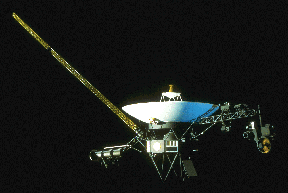
The rare arrangement of planets Jupiter, Saturn, Uranus, and Neptune in the 1980's made it possible for the Voyager spacecrafts to visit them over a 12 year span instead of the normal 30. They used gravity
...more
Minerals are the building blocks of rocks. They are non-living, solid, and, like all matter, are made of atoms of elements. There are many different types of minerals and each type is made of particular
...more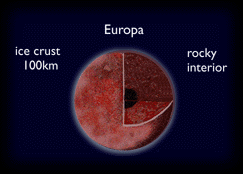
The diagram to the left shows a cutaway of the possible interior structure of Europa. The composition of the icy moons is mostly ice, therefore there is probably a small core of some rocky material buried
...more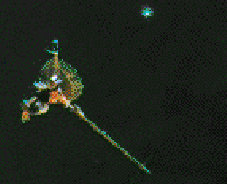
Since it has been determined that the composition of the moons is mostly ice, there is probably not enough magnetic material, such as iron, present for these to have a magnetosphere of their own. Nevertheless,
...more
Amalthea was discovered by E Barnard in 1872. Of the 17 moons it is the 3rd closest to Jupiter, with a standoff distance of 181,300 km. Amalthea is about the size of a county or small state, and is just
...more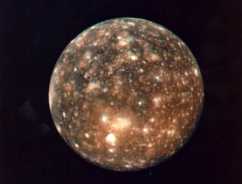
Callisto was first discovered by Galileo in 1610, making it one of the Galilean Satellites. Of the 60 moons it is the 8th closest to Jupiter, with a standoff distance of 1,070,000 km. It is the 2nd largest
...more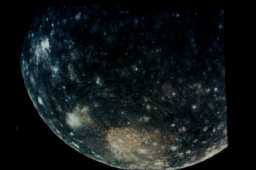
The insides of most of the moons and planets separated while they were forming out of the primitive solar nebula. Measurements by the Galileo spacecraft have been shown that Callisto is the same inside
...more
